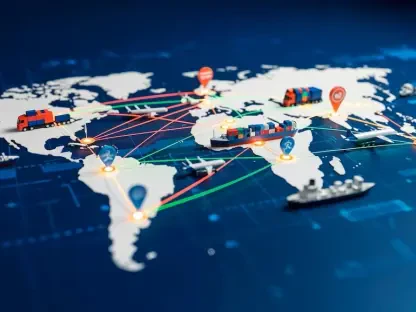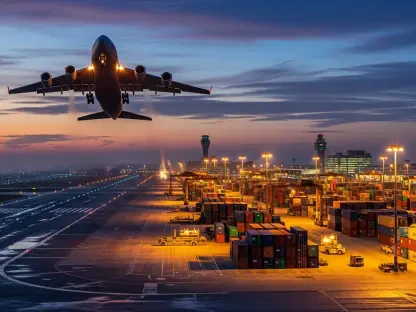Revolutionizing Warehouse Operations
In today’s fast-paced environment, warehouses are confronting unprecedented challenges that demand innovative solutions. Global supply chains face intense pressure from fluctuating customer expectations, labor shortages, and unpredictable demand, forcing businesses to rethink traditional practices. Corporations are making significant investments in AI and automation, predicting potential savings that could radically alter operational landscapes by 2030. This analysis examines these emerging trends, scrutinizes market data, and explores future projections, setting the foundation for strategic transformation within warehousing.
Tracing the Shift from Manual Processes to Machine Automation
Exploring the historic evolution of warehousing technologies reveals an industry once reliant on manual processes and minimal real-time visibility. Traditional warehouses often struggled with inefficiencies stemming from reliance on labor-intensive, paper-based inventory systems. These setups were prone to errors and required regular manual checks, hindering agile decision-making. Progress shifted operations toward more advanced systems, like barcodes and warehouse management tools. These improvements ushered in the era of enhanced accuracy, although human oversight remained necessary to interpret data and drive decisions.
Advancing Intelligence in Warehouse Management
AI Empowering Predictive Decision-Making
The emergence of intelligent warehouses marked significant shifts as AI and machine learning began influencing operations. AI models excel in predicting demand patterns, flagging anomalies, and optimizing resource allocation, thus enhancing agility and minimizing human error. For example, businesses utilizing AI-driven analytics have improved inventory management, thus lowering costs and enhancing service delivery. However, these systems require continuous refinement to address challenges like data accuracy and integration into existing workflows, underscoring the need for ongoing technological development.
Harmonizing Automation with Human Expertise
Automation reshapes workforce dynamics, reducing manual workload while empowering employees to concentrate on strategic tasks. This transition enhances operational efficiency and presents opportunities for workforce development. Employees now pivot from routine duties to managing automated systems, demonstrating how smart warehouses reshape roles. Still, the psychological and economic impacts of job displacement present potential risks that businesses must navigate, emphasizing the delicate balance between technological advancement and human engagement.
Innovations and Global Variations
Regions worldwide adopt AI and automation technologies at differing paces, influenced by factors such as labor costs and economic conditions. High-cost labor markets rapidly embrace advanced automation, while others encounter challenges that impede widespread adoption. Innovations, including drone technology for aerial inventory assessments, offer fresh efficiencies and promise transformative impacts, yet misconceptions concerning automation’s effect on employment may obscure potential benefits and inspire misleading fears about job creation.
Forecasting Warehousing Trends and Emerging Technologies
Looking forward, emerging technologies like blockchain for supply chain transparency and IoT connectivity are poised to further redefine warehousing. The demand for faster deliveries and varying regulatory landscapes might prompt swift technology adoption rates. Predictions indicate a move toward entirely autonomous warehouses where real-time data underpins all decisions, effectively minimizing human involvement. AI capabilities’ continuous evolution remains a critical determinant shaping the industry’s future, hinting at a landscape ripe with unprecedented agility and efficiency.
Strategic Directions for AI and Automation Integration
Successfully navigating AI and automation transition requires strategic foresight. Businesses should invest in scalable technologies and prioritize employee training to manage new systems effectively. Collaborating with technology providers can accelerate innovation adoption. Conducting thorough cost-benefit analyses allows companies to tailor automation investments to meet specific operational needs. By adopting these strategies, businesses can leverage AI transformations to secure long-term competitive advantages in the market.
Embracing New Paradigms
The integration of AI and automated systems in warehousing operations represents a paradigm shift with profound impacts. Warehouses enhance efficiency, adaptability, and increased strategic human engagement. Technological advancements continually evolve, exponentially influencing the warehouse industry’s potential. Businesses prepared to embrace these transformations thrive, paving the way for dynamic efficacy in the ever-changing supply chain landscape.









